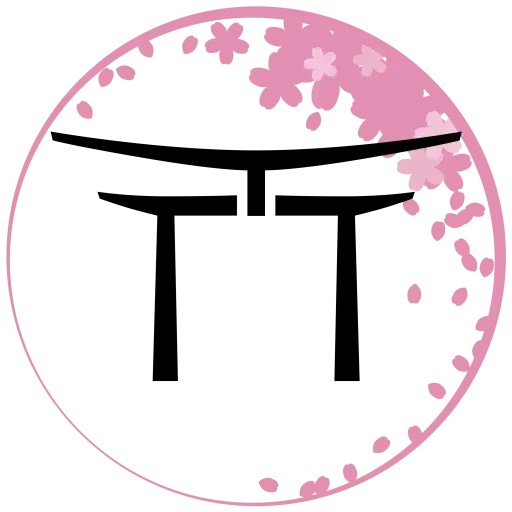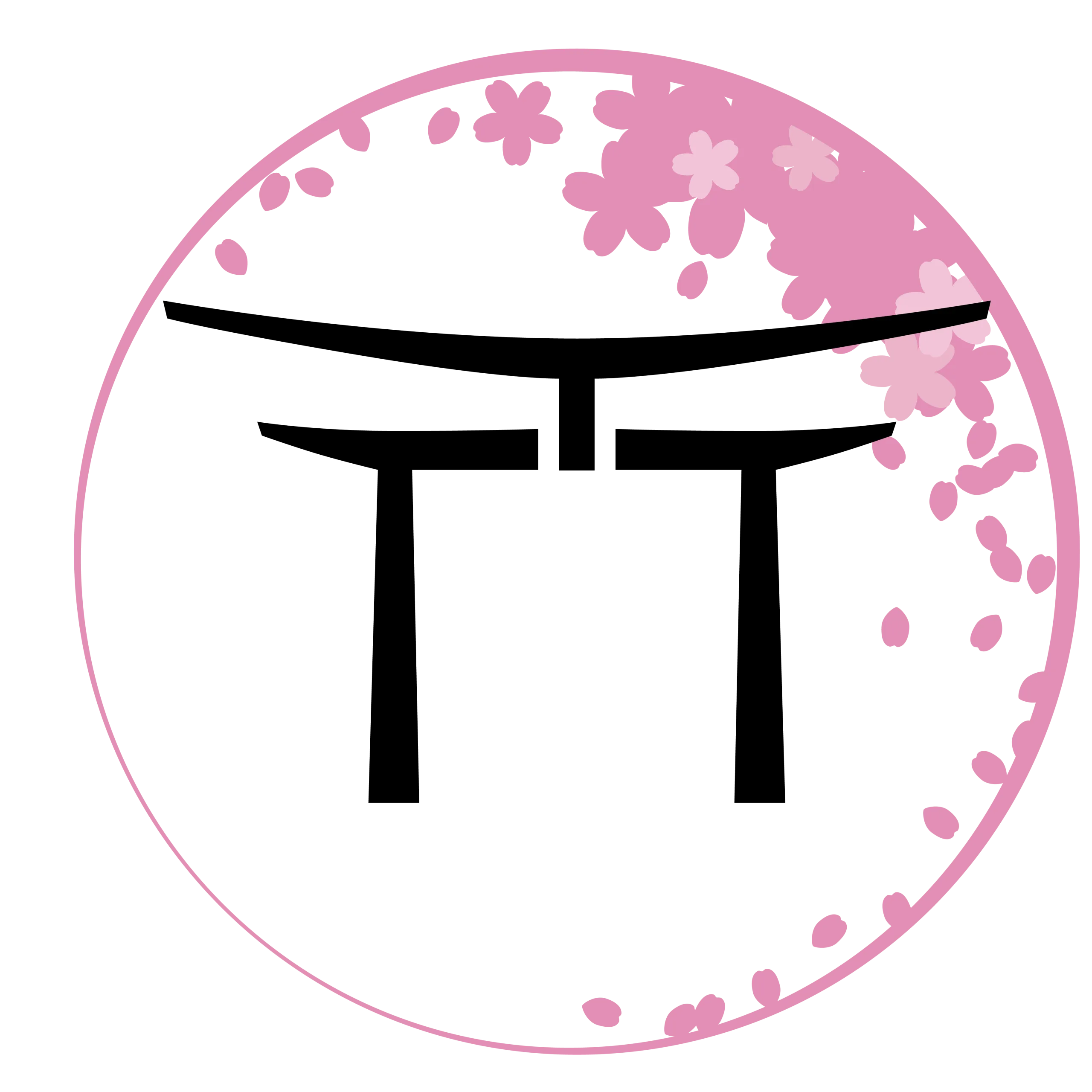First Birthday Traditions in Japan: Isshou Mochi and Erabitori
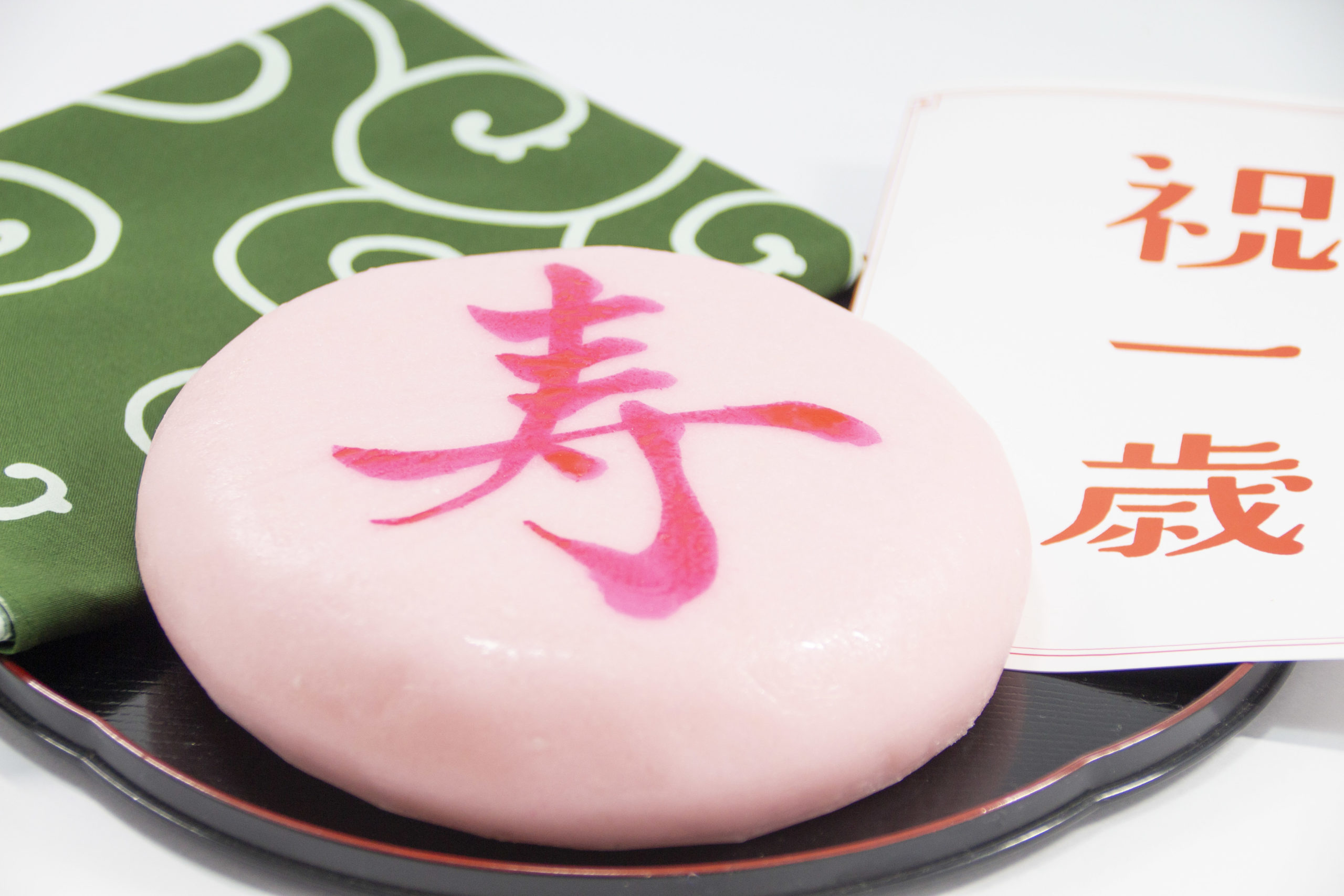
Last Updated on May 1, 2024 by Kay
This post may contain affiliate links, meaning I may earn a small commission on any purchases through those links at zero additional cost to you. Whatever I make goes to keeping this website running and I am forever grateful for the support. See my Privacy Policy for more information.
In July this year, my daughter turned one! Where has the time gone?!
I can’t believe a year ago I was recovering from a C-section with a tiny new person in my life (and panicking about everything). I never would have imagined that my baby would grow so much in a year and become such a funny, smart, persistent, and beautiful little girl. I feel very lucky to be her mother.
Due to COVID-19, Baby A’s first birthday wasn’t exactly how we imagined it would be and we limited it to just the three of us. However, it was a blessing in disguise because there was so much to do (maybe we packed in too much), and to be honest, Baby A was not in a good mood that morning. Some of the pictures even scream, “Worst Birthday Ever!”, but considering one of the Japanese traditions she had to endure, which involved carrying a giant mochi (rice cake), I don’t blame the kid.
Table of Contents
- 🎁Read: Great First Birthday Gifts: What to Get a 1-Year-Old in Japan🎁
- Isshou Mochi no Oiwai: The First Birthday Japanese Tradition of Making Babies Haul Giant Rice Cakes
- What is Isshou Mochi?
- Regional Variations of Isshou Mochi
- First Birthday in Japan: Baby A’s Isshou Mochi No Oiwai Experience
- What To Do With All That Mochi
- Where to Get Isshou Mochi
- Erabitori: A First Birthday Tradition in Japan to Peek Into Your Child’s Future
🎁Read: Great First Birthday Gifts: What to Get a 1-Year-Old in Japan🎁
Isshou Mochi no Oiwai: The First Birthday Japanese Tradition of Making Babies Haul Giant Rice Cakes
The only photo of my husband on his 1歳の誕生日 (issai no tanjoubi or first birthday) is of him carrying a mochi weighing around 2 kg in a furoshiki (風呂敷) tied to his back and wailing.
I remember being shocked when I saw it because my image of a first birthday didn’t involve something so intense! This tradition in Japan is called isshou mochi no oiwai (一升餅のお祝い) .
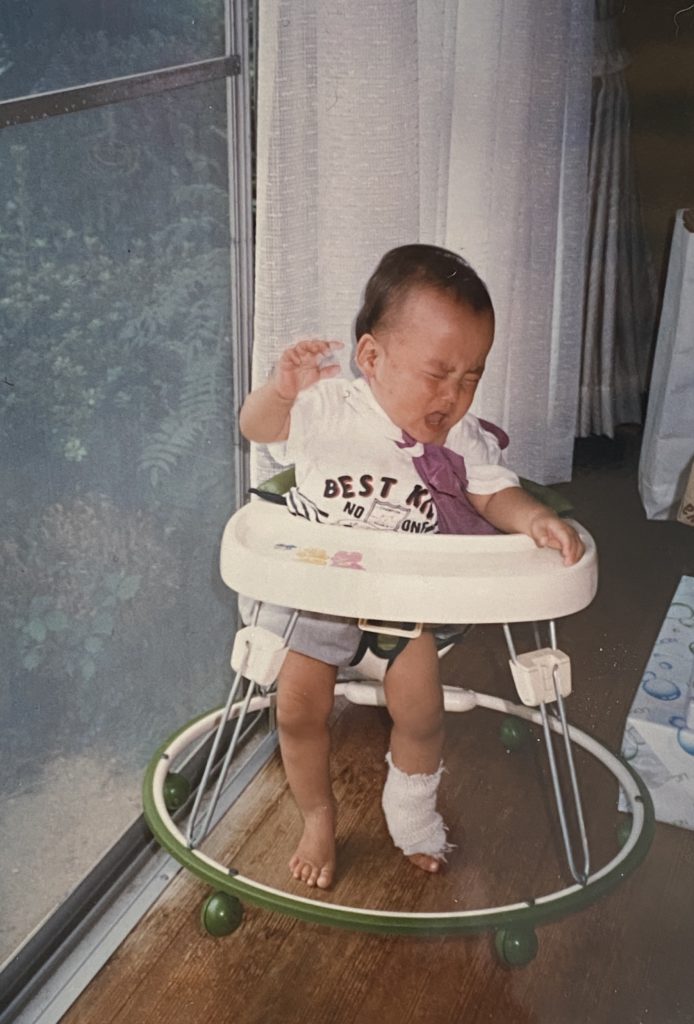 Best first birthday ever!
Best first birthday ever!
What is Isshou Mochi?
On their first birthday, babies in Japan are made to carry or step on mochi weighing around 2 kg. This tradition does not have to be celebrated precisely on the child’s birthday and instead can be celebrated the week before or after their birthday.
Shou (升) in isshou mochi is a unit of measurement. One shou or isshou (一升) is equivalent to around 1.8 liters or 1.8 kilograms and is usually used for measuring sake or rice.
You might be wondering, then, why the mochi babies carry on their first birthday are around 2 kg instead of 1.8?
Well, that’s because 1.8 kg of glutinous rice is used to make the mochi that babies carry for isshou mochi. Mochi is very important in Japanese culture and is used for many traditions and celebrations such as New Years, Hinamatsuri, etc., so it’s no surprise that it also plays an essential role in celebrating a child’s first birthday, which was an especially important milestone and joyous occasion in the past when infant mortality rates were high.
The weight of the rice used to make the mochi is typically 1.8 kg as the on’yomi for 一升 (isshou) is also the same as 一生 (isshou), meaning “one lifetime”. Therefore, isshou mochi no oiwai is practiced so that a child lives a long and healthy life in which they will never go hungry. The round and flat shape of mochi is also supposed to symbolize a child living a harmonious and happy life.
As the resulting mochi at roughly 2 kg is very heavy for a tiny one-year-old, carrying it symbolizes a child being able to stand on their own feet and be independent in life. Stepping on the mochi, which is called fumi mochi (踏み餅), is practiced in some regions of Japan such as Kyushu. The act symbolizes living a long life as having strong legs will carry one through a lifetime.
Regional Variations of Isshou Mochi
Isshou mochi no oiwai has been practiced in Japan for generations, although its exact origin is unknown. Some families, however, choose not to practice it. Furthermore, how it is carried out, as well as the name, vary depending on the region:
| Region | Name | How It’s Practiced |
| Hokkaido | Isshou mochi (一升餅) Tanjou mochi (誕生餅) | The child carries the mochi in a furoshiki on their back while standing and walking. In some areas, parents make their children fall as it is believed that if they fall, they leave the home later when they are older. |
| Tohoku | Isshou mochi (一升餅) Tattara mochi (立ったら餅) Mochi seoi (餅背負い) Seoi mochi (背負い餅) | The child carries the mochi in a furoshiki on their back while standing and walking. In some areas, this is held before the child turns one. |
| Hokuriku | Isshou mochi (一升餅) | The child carries the mochi on their back. In some areas, the parent lightly hits their child’s bum with mochi. |
| Tokai | Isshou mochi (一升餅) Tanjou mochi (誕生餅) Shiri mochi (尻餅) | The child carries the mochi in a furoshiki on their back while standing and walking. Some areas have children step or sit on the mochi. |
| Kanto | Isshou mochi (一升餅) | The child carries the mochi in a furoshiki on their back while standing and walking. In some areas, parents make their children fall as it is believed that if they fall, they leave the home later when they are older. |
| Koshin’etsu | Isshou mochi (一升餅) | The child carries the mochi in a furoshiki on their back while standing and walking. Children in Nagano prefecture are also made to sit in or step on a bamboo winnowing fan (箕 or mi/mino) while carrying the mochi. The fan is then shaken, similar to sifting rice. This is meant to symbolize the good qualities of the child staying in the basket (rice) and the bad qualities falling out (husks). |
| Kinki | Isshou mochi (一升餅) Seoi mochi (背負い餅) | Originally, only a few areas in the Kinki region had this tradition.
The child carries the mochi in a furoshiki on their back while standing and walking. Some areas have children step on the mochi. |
| Chugoku | Isshou mochi (一升餅)
| The child carries the mochi in a furoshiki on their back while standing and walking. The child then does erabitori. |
| Shikoku | Isshou mochi (一升餅) | The child carries the mochi in a furoshiki on their back while standing and walking. |
| Kyushu | Isshou mochi (一升餅) | The child wears straw sandles called 草鞋 (waraji) and steps on the mochi and/or then carries it on their back. Many children also do erabitori afterward. |
| Okinawa | Tankaayuuee (タンカーユーエー) | Okinawa does not have isshou mochi and instead does something similar to erabitori in which items such as money, a book, an abacus, etc., are placed in front of the child. Whatever item the child chooses will predict their future. |
First Birthday in Japan: Baby A’s Isshou Mochi No Oiwai Experience
Since my husband’s family is from Hiroshima, my daughter’s isshou mochi no oiwai would involve her carrying the mochi on her back and then moving on to erabitori.
My mother-in-law bought an adorable pink and white heart-shaped mochi for my daughter and had it sent directly to us the day before her birthday from a specialty shop in Hiroshima. It also had her name written on it in hiragana.
Some mochi for isshou mochi can also have your child’s weight printed on it or be split into smaller pieces like this one from Amazon Japan. At 2 kg, the thing was heavy and I couldn’t believe my tiny daughter would have to haul that.
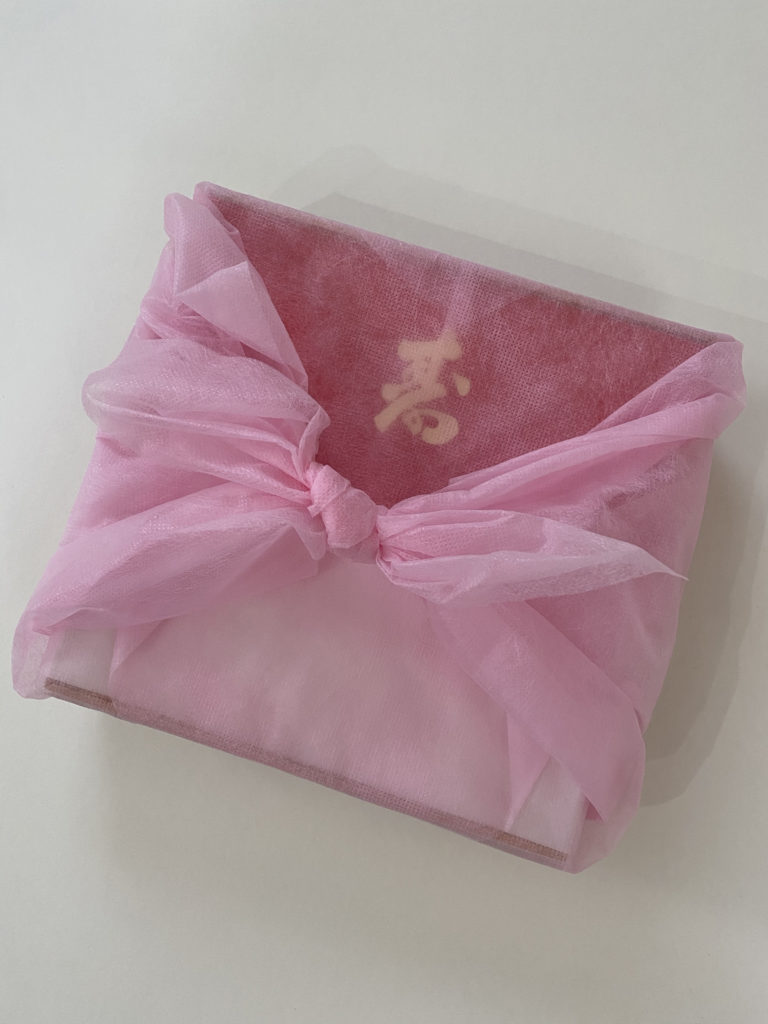
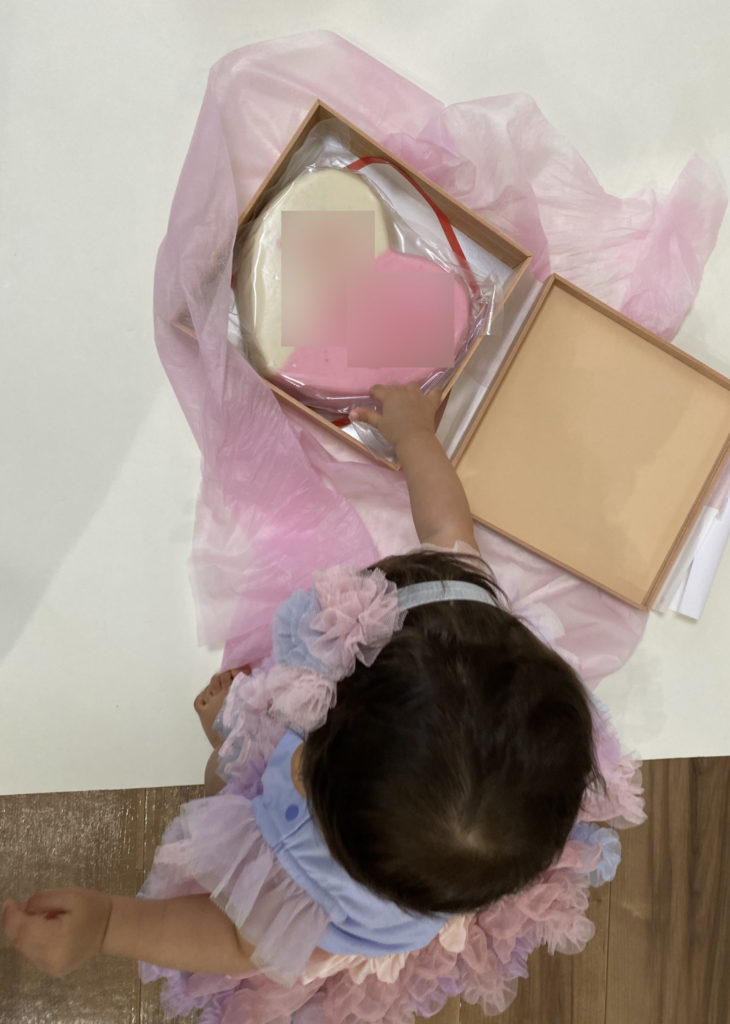
The mochi is traditionally carried in a furoshiki (風呂敷) but recently, little backpacks have become popular to use. We already had an adorable one that Baby A’s grandmother made her for daycare, so we decided to use that.
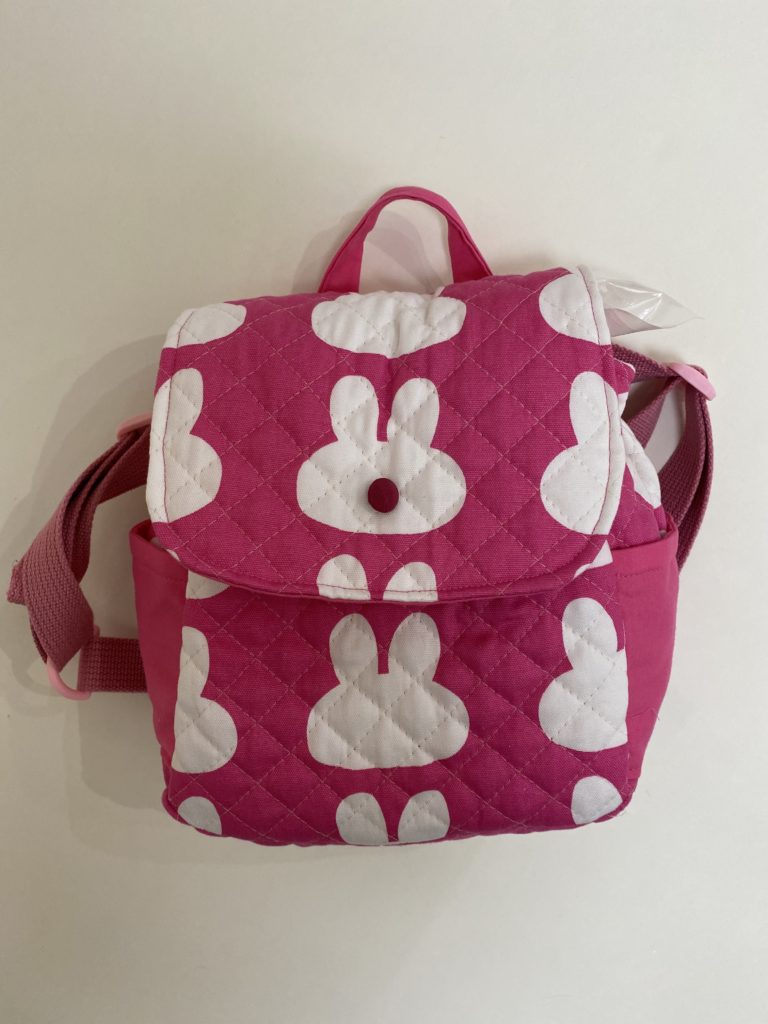
Some babies are perfectly fine crawling or walking with the mochi on their back. Unfortunately, as Baby A is truly her father’s daughter, she fell whenever she tried to stand and cried. She didn’t last very long at all and we didn’t force her as it can be strenuous for a child and we didn’t want her to get hurt.
However, not being able to carry the mochi and falling wasn’t a cause for worry as, depending on the region, it’s believed that when children fall (落とす or otosu), it gets rid of bad luck (厄落とし or yakuotoshi). Some regions also believe that falling down means that the child will stay at home for a long time because they can’t walk (and thus won’t walk out of the home for good when they’re older, which made my 親バカ husband very happy).
What To Do With All That Mochi
After the baby carries the mochi, the mochi should be cut up into pieces (which requires a lot of strength) and eaten. Any uneaten portions should be refrigerated and consumed within a few days or stored in the freezer.
My husband’s favorite way to eat the mochi is to pan-fry it and then eat it with some sugar, soy sauce, and nori. This is called isobeyaki (磯辺焼き).
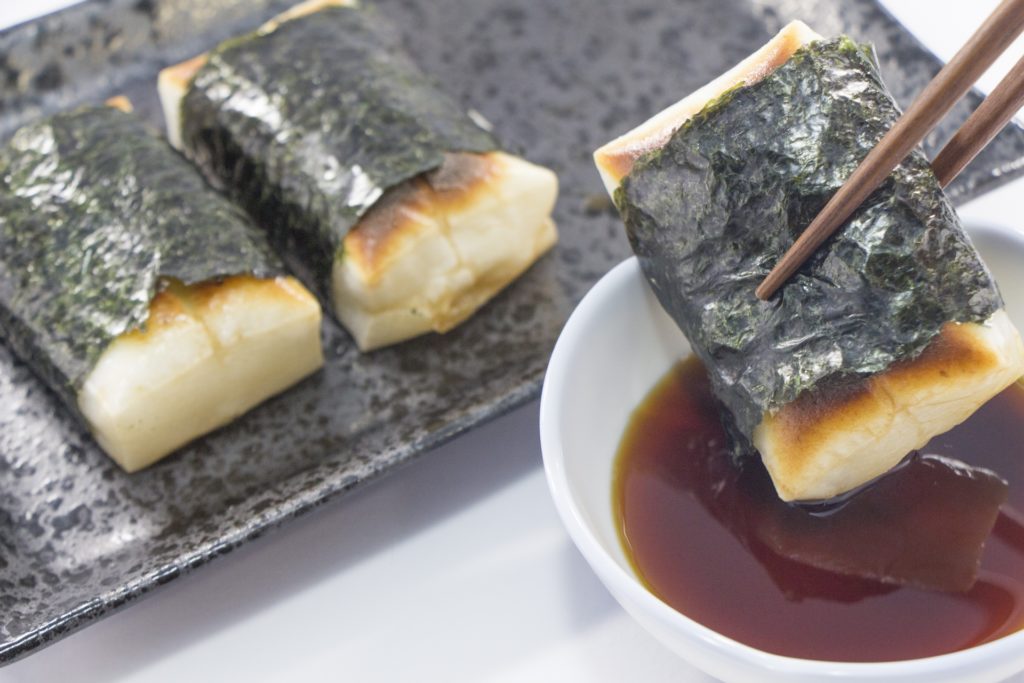
Where to Get Isshou Mochi
As mentioned earlier, we got the mochi for Baby A’s isshou mochi as a gift from my mother-in-law, but there are plenty of stores and online retailers that sell adorable isshou mochi sets and some that sell sets with erabitori cards (which I’ll go into next). Here are just a few that are online:
1. なないろ広場
2. 一升餅の専門店【おぢか屋】
3. えにし屋
When purchasing isshou mochi, note that some stores have limited stock so it’s important not to wait until the last minute to buy the mochi, especially if you want one that’s personalized.
My mother-in-law put in her order for my daughter’s isshou mochi three weeks ahead of time. The store, however, made the mochi two days before her birthday as mochi will spoil over time. This is why it’s also important not to have the mochi made and delivered to you too early since it will go bad within a few days if it’s not refrigerated.
Erabitori: A First Birthday Tradition in Japan to Peek Into Your Child’s Future
Another Japanese tradition we did on our daughter’s first birthday was erabitori (選び取り), which is a fortune-telling tradition that has similarities to first birthday traditions in China (Zhuazhou) and Korea (Doljabi).
Some people believe that erabitori has been around since the Sengoku period (1467-1615) and in fact, may have been adopted from the aforementioned traditions in China and Korea; however, similar to isshou mochi, its exact origin is difficult to pin down.
Erabitori is believed to predict a child’s future based on objects that are laid out in front of them. Whatever object the child chooses (erabi or 選び) and then takes (tori or 取り) will be related to their future, such as their profession, talents, or personality.
Note that different regions and families have their own way of doing erabitori. For instance, the first card or object the child touches will predict their personality while the second will predict their future career. Usually, this is discussed within the family before the child does erabitori.
There are a variety of objects you can use, such as instruments, a camera, or a toy stethoscope. Recently some people are even putting smartphones in front of their child to symbolize a career in IT (I feel like a lot of kids will automatically choose this — the addiction starts early)! So there are no strict rules — you’re free to use whatever you like and assign your own meaning to it.
Below are just a few of the more commonly used items for erabitori and what they mean.
| Object | Meaning |
Calculator or abacus | Child will be good at math and may become a businessperson. |
| Pen | Child will be studious and good at art and/or writing. They will perhaps become an artist or writer in the future. |
| Scissors | Child will be good with their hands and may have a future as a hairdresser or designer. |
| Spoon or chopsticks | Child will be good at cooking and never have to worry about food. Their future profession may be related to food. |
| Dictionary | Child will have good grades and inquisitive. They may be a scholar in the future. |
| Mirror or brush | Child will be fashionable. Their future career may be related to the fashion or beauty industry. |
| Money, wallet, or purse | Child will never worry about money |
| Ruler | Child will be methodical and diligent. They may end up working in architecture or construction. |
| Ball or shoes | Child will be good at sports and may become an athlete. |
*I hope this goes without saying but please be careful with whatever you decide to use for your baby’s erabitori in order to avoid injury, especially if you want to use scissors. Child-safe scissors with a protective cover are recommended.
Recently, using cards in place of objects has become popular and that’s what we decided to go with. We ordered a set of erabitori cards from Minne, a Japanese site that specializes in handmade goods.
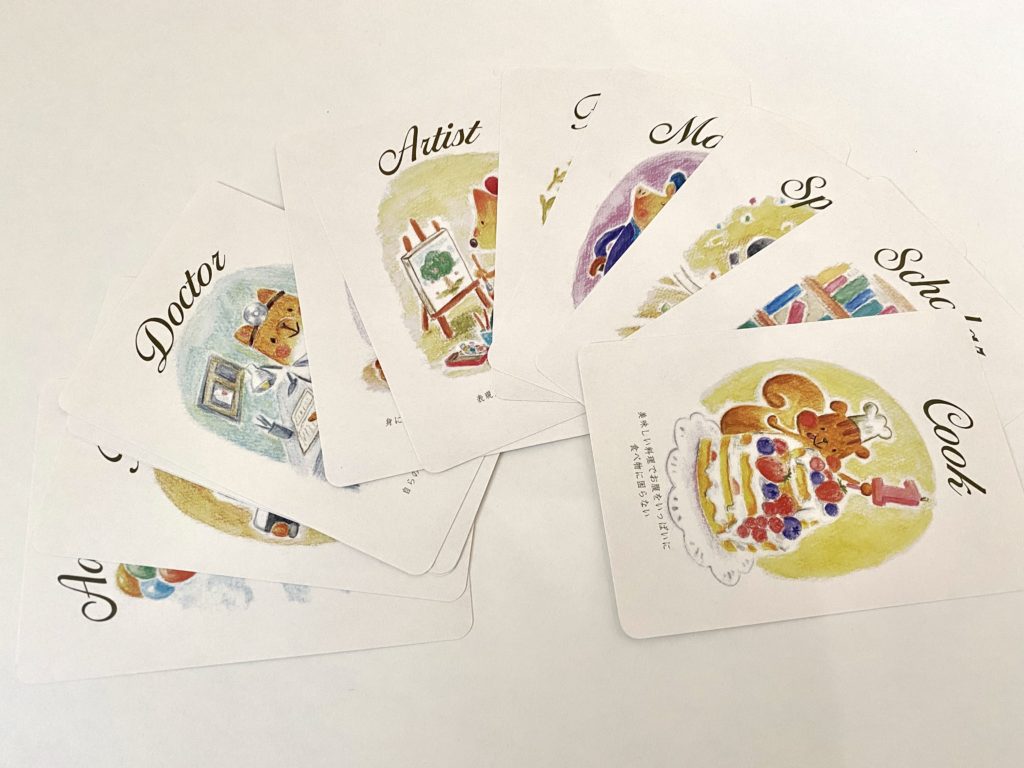
We arranged the erabitori cards in a line in front of our daughter and she immediately grabbed…
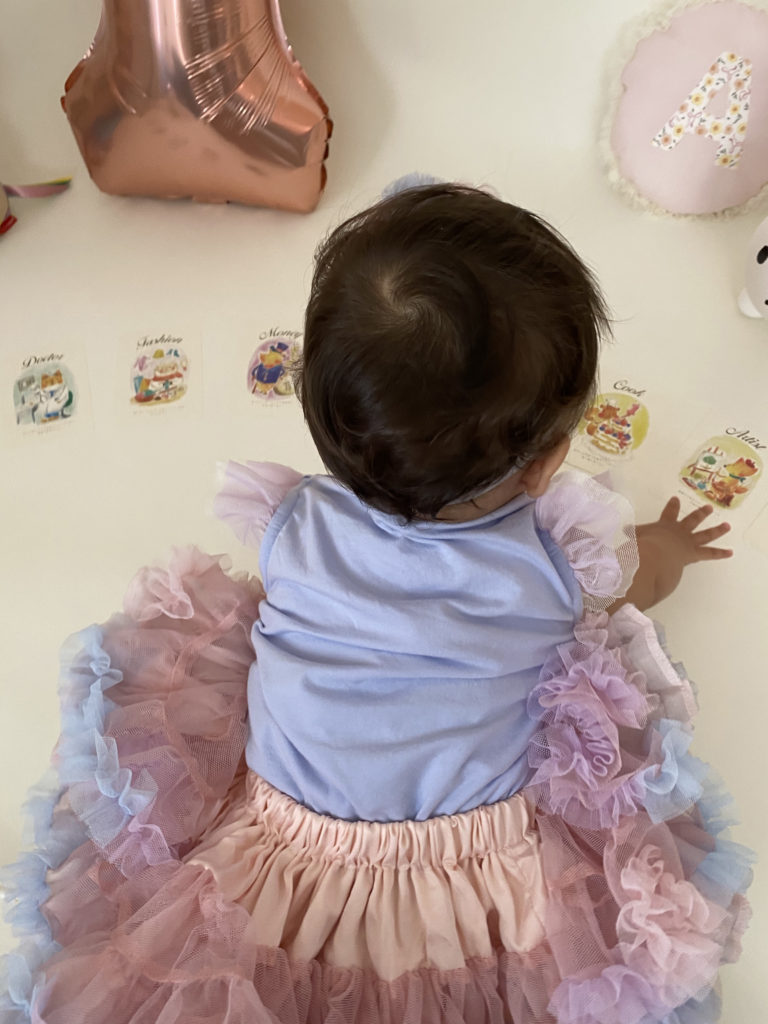
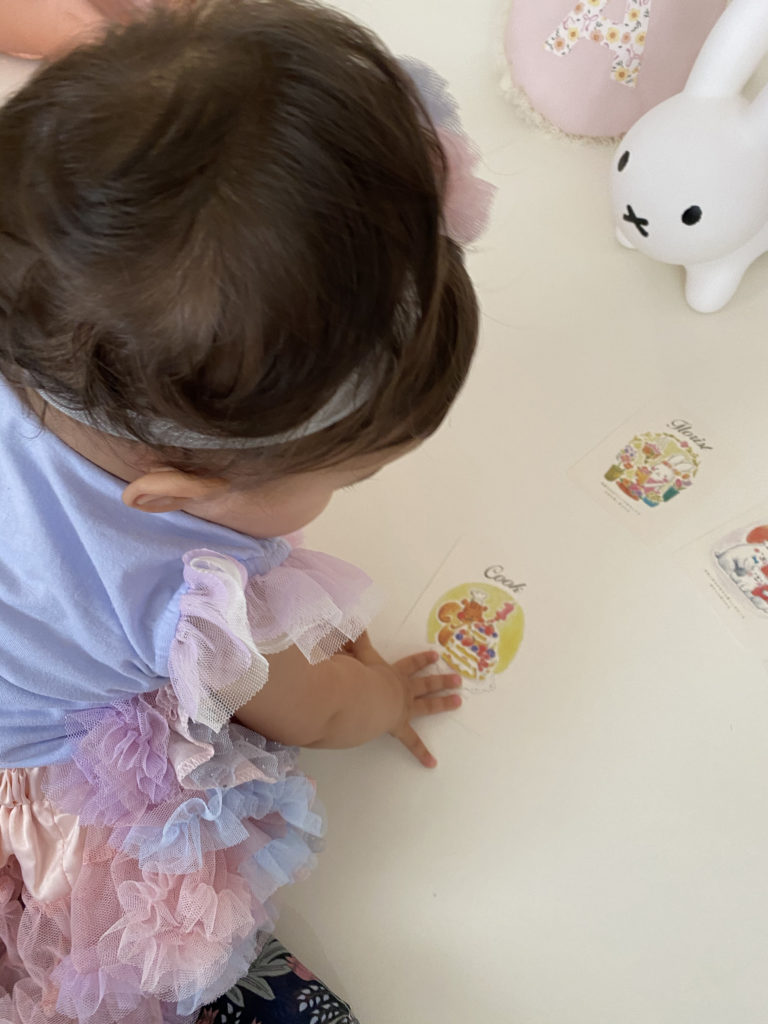
“Cook”!
So it looks like we have a little future chef on our hands, which is great because I love eating.
If you’re interested in finding a photographer for your little one’s first birthday photos, I highly recommend using the site fotowa.
This site is very easy to use and allows you to search for photographers in Japan for various occasions. You can filter according to where you live and the time and date that works best for you.
All photographers have ratings and best of all, they all charge the same rate: 21,780 yen for weekdays and 26,180 yen for weekends and holidays.
We didn’t get professional photos of our daughter on her first birthday as the pandemic was still quite new and we were worried, but we did use fotowa for family photos when she was two. If you want to read about my family’s experience using fotowa, as well as other family photography services in Japan, check out this article.
